Disney Plus Parks
Once upon a very long time ago indeed, each Disney Park had a capital-T Theme of its own. Not mere decoration, but a purpose; a message; a meaning. Today… Well… Magic Kingdom, EPCOT, Hollywood Studios, Animal Kingdom, Disneyland, California Adventure… Each may look different, and each may offer a unique lineup of rides and lands and experiences and restaurants. But are they really about different things? Or for that matter, about anything specific at all?
In Disneyland, Walt envisioned a park “dedicated to the ideals, the dreams, and the hard facts that have created America.” You see that DNA in Main Street’s idealization of small town life; in Adventureland’s encapsulation of our shared image of adventure and romance; in Frontierland’s storied interpretation of our history; in Tomorrowland’s diminishing ode to the futures we have, do, and will envision.
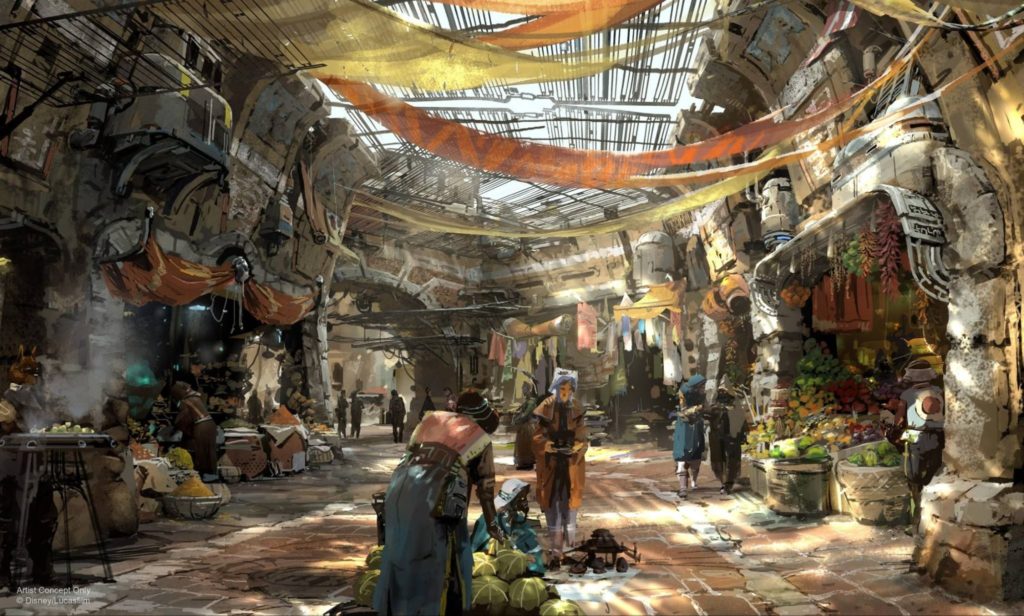
Then there’s Star Wars: Galaxy’s Edge. Unlike the rest of the park’s broad, genre-stylized lands, it’s about one thing: Star Wars. Twice the size of the next biggest land at the park, Galaxy’s Edge is a gritty, impoverish trading village purposefully devoid of color and kinetic energy. It’s a scrappy, war-torn place dictated by a different style guide; a different timeline; different rules for courtesy and show; a different mindset.
And it’s at Disneyland because… well… because Disney wanted copies of its Star Wars land on both coasts. Period. Galaxy’s Edge has nothing to add to Disneyland’s message; it isn’t “about” what the rest of Disneyland is “about;” it exists for its own sake; an unapologetic outlier that’s there because it had to be there. If California Adventure had the space, it might’ve been there, instead. But it didn’t. So it’s at Disneyland. Copied-and-pasted in exactly the same form that it’s in as part of Disney’s Hollywood Studios in Florida.
Maybe that’s okay. Galaxy’s Edge is “tacked on” both figuratively and physically; removed from the rest of the park and hidden by a berm. Sure, it makes one wish that Disney had just waited until they were ready to build a third gate in Anaheim and put Galaxy’s Edge (and Avengers Campus and a proper San Fransokyo) there instead. But they didn’t.
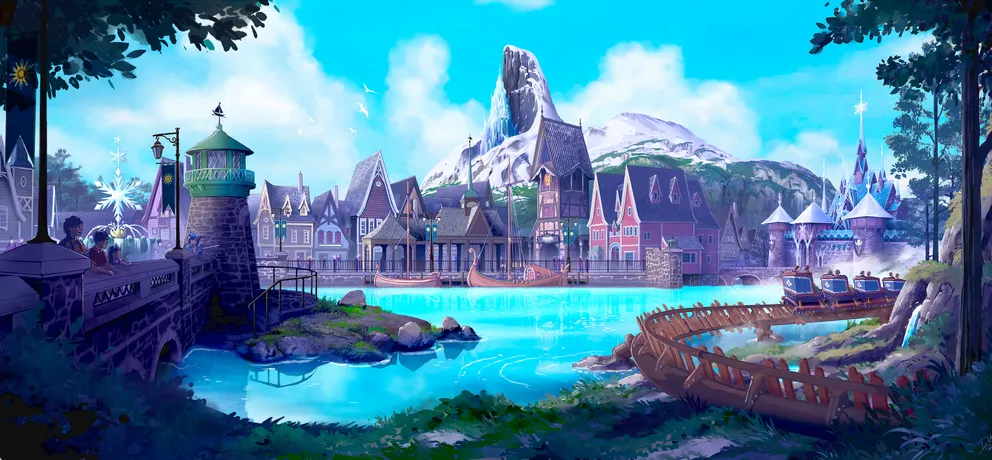
And now, rumors swirl about the last major expansion pad at the landlocked Disneyland Park – the old Motorboat Cruise lagoon – and how it’s eyeballed as the space for… well… could be a copy of Shanghai’s Zootopia. Or it could be a clone of Hong Kong’s World of Frozen. Or maybe a condensed version of Animal Kingdom’s Pandora. It’ll really just depend on which concept floats to the top.
Any one of them is possible. There’s no deeper consideration; no standard to entry. Just the broad requirement that Disneyland be a global hub where The Walt Disney Company’s stories, characters, and franchises come to life. Oh, and y’know, make sure it’s good stuff because Disneyland is special.
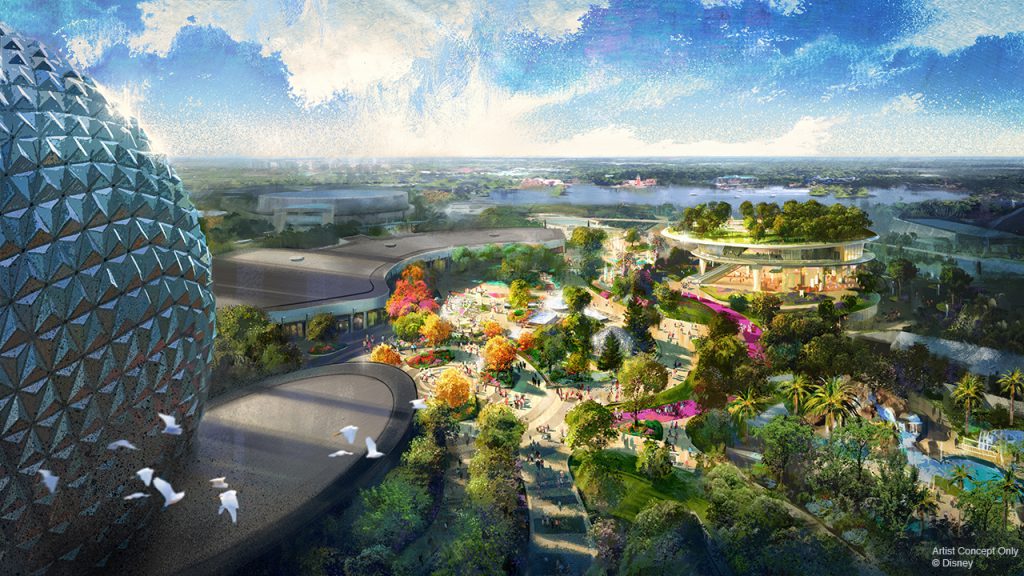
Likewise, consider Disney’s multi-year work at EPCOT. The “new” EPCOT may end up looking more modern and cleaner and sleeker and more colorful than the old; it may have homages to its ’80s roots and pavilions that you’d never look at and mistake for something you’d see at Magic Kingdom, Hollywood Studios, or Animal Kingdom. The “new” park may be (to borrow Bob Chapek’s decree from the 2019 D23 Expo) “more Disney, more family, more timeless, and more relevant” when its reimagining is complete. But stripping away its architecture, is it “about” something no other park can claim? Do its rides and attractions together sum up to a message that’s uniquely its own?
More to the point, is it “about” anything at all? Does it have a big message to convey? A reason for being? A “North Star”? A theme?
If we really tried to come up with a concise Theme for EPCOT in 2021 – a whole made by the sum of parts like Frozen Ever After, Guardians of the Galaxy: Cosmic Rewind, Journey into Imagination, Spaceship Earth, and Remy’s Ratatouille Adventure – wouldn’t it be that EPCOT is a global hub where The Walt Disney Company’s stories, characters, and franchises come to life?
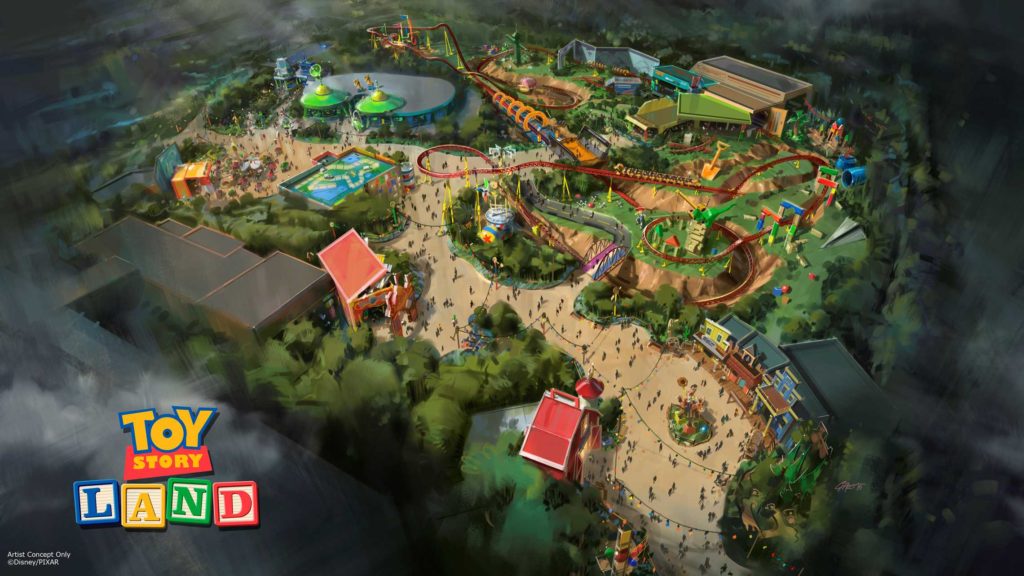
Disney’s Hollywood Studios long ago stopped being a Studio, and has only the barest vestiges of Hollywood. Moreover, the addition of two “Living Lands” – Toy Story Land and Star Wars: Galaxy’s Edge – both lend the park the start of a new theme, but surely only add to the park’s uneven execution, scrambled identity, and confusion over what the park is about. (Hence why Disney polled guests on a number of increasingly outrageous and abstract names last decade, ultimately deciding that the Hollywood Studios name would stick around despite its obsolescence.)
Even if Hollywood Studios were to fully commit to the theme of stepping into immersive worlds from films of today and historic Hollywood locales of yesterday (already a somewhat contrived connection), the park’s mix of old and new, studio cross-promotion, and “plug-and-play” setup lends itself to just one theme today: a global hub where The Walt Disney Company’s stories, characters, and franchises come to life.
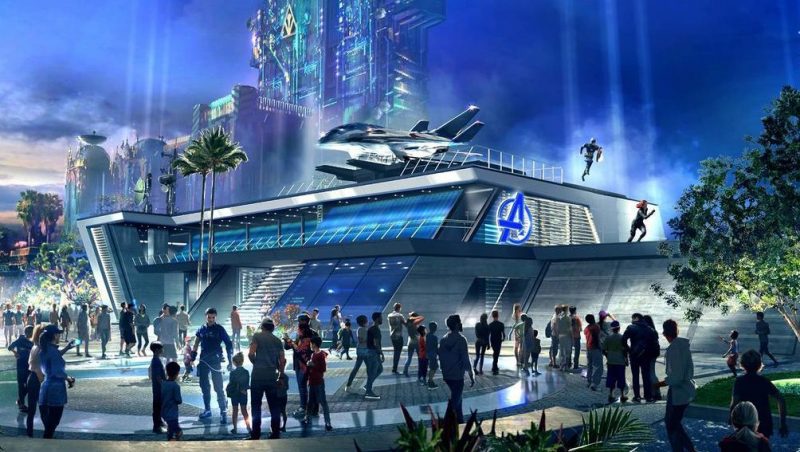
And so it goes for Disney California Adventure, where a $1.2 billion, five-year reimagining meant to recast the park’s once-cartoon lands as idealized, romanticized Californian settings was followed just as quickly by an equally-ambitious effort to undermine that.
Today, the park’s role is clear. Its beautifully stylized lands recreate historic Los Angeles, the High Sierras, antique seaside boardwalks, and more… but the attractions within those lands are wholly dedicated to Cars, The Little Mermaid, Spider-Man, Toy Story, Guardians of the Galaxy, The Incredibles, and Monsters Inc.
Even some self-proclaimed Imagineering aficionados have begun to suggest that the park’s next big addition ought to be (ready for this?) Zootopia. And I sit back, exhausted, and proclaim with a shrug, “Why not?” After all, what could we confidently say that Disney California Adventure’s Theme is in 2024? Probably: a global hub where The Walt Disney Company’s characters, stories, and franchises come to life.
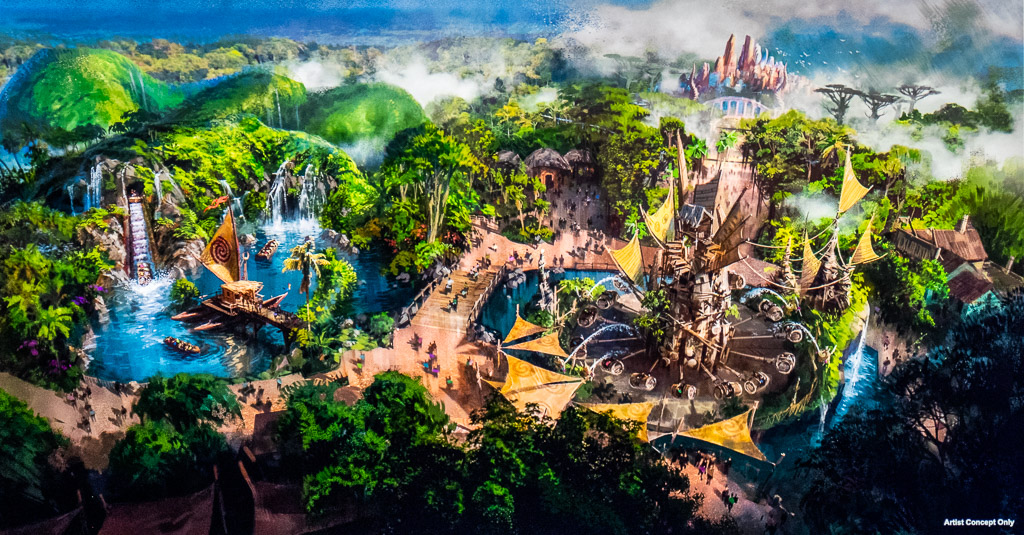
At least Disney’s Animal Kingdom – ever Rohde’s masterpiece – retains clear, evident Themes so deeply and thoughtfully embedded, they’ll be hard for even the most persistent executive to scrub away completely.
But even that was undercut when, at the semi-annual D23 Expo in 2022, Parks Chairman Josh D’Amaro called Walt Disney Feature Animation head Jennifer Buck on stage to unveil a draft, will-they-or-won’t-they idea to replace Animal Kingdom’s Modern Marvel: DINOSAUR with a ride either copied from or inspired by Shanghai Disneyland’s Zootopia land. A year of online turmoil began during which fans hotly debated whether or not Zootopia belongs in Animal Kingdom (editor’s note: it doesn’t).
Anyway, a change in leadership at Imagineering meant that the potential Zootopia plans were retracted anyway, with Disney’s “V2” draft for the Dinoland space instead inserting Encanto and Indiana Jones – properties that would both need some amount of tweaking if they’re meant to engage meaningfully in Animal Kingdom’s Themes. But even if – like Pandora: The World of AVATAR – Imagineers carefully curate the park’s future IPs to look and feel like they belong, it’s a scary thought that one day, Animal Kingdom may be a beautifully decorated park whose central identity, overarching message, and primary purpose is to be… a global hub where The Walt Disney Company’s characters, stories, and franchises come to life. Just, y’know, the nature-y ones.
The Ghosts of Disney Parks Past
In nearly 6,000 words now, we’ve painted a pretty dire picture.
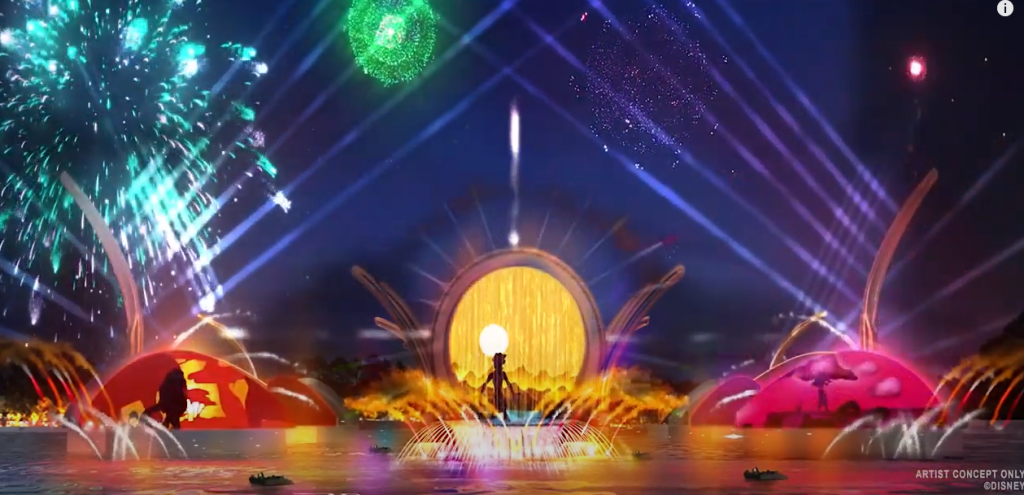
One where, differently decorated but ultimately interchangeable, Disney Parks emerge from their next era as “brand loyalty centers;” “cute but dumb” places that expertly leverage Disney’s world class character catalogue in top tier environments… but don’t aspire to much more. In this Thematic dystopia, Disney Parks are buckets happy to collect from the spigots of Disney, Pixar, Marvel, Star Wars, 20th Century, and whatever’s next rather than generating new content themselves.
In the darkest of Disney Parks futures, Imagineers try valiantly to curate content as it flows, dutifully hoping to direct it to the park of “best fit,” but where superheroes and princesses ultimate fall where they may and where they’re needed most; each park, after all, is a blank canvas with only the loosest ideological requirements for IP entry and where decoration can paper over poor fit…
It’s in this worst-case-scenario that each night, guests gather around a body of water for a nighttime same-tacular invariably staged as a Disney music singalong; a park’s “kiss goodnight,” reminding guests as they leave that they have indeed been to a global hub where The Walt Disney Company’s stories, characters, and franchises come to life…
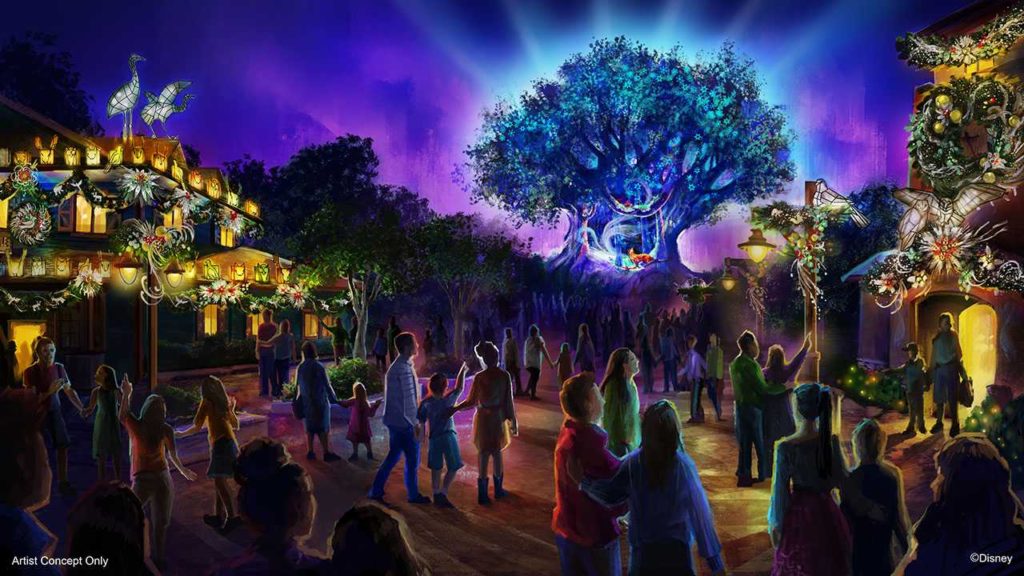
The good news is, we all know that that future isn’t certain. The pendulum always swings back. Believe it or not, there will come a time in the future that the Walt Disney Company is not the content powerhouse it is today; one in which the parks themselves return to center stage as pop culture icons in their own right. It’s happened before.
All it takes is for the right people to recognize that Disney Parks can be both a tool for distributing meaningful, beloved, timeless content and an entity that generates it. All it requires is that executives learn to look at the parks not in terms of their own (often short) tenures and the synergy and revenue that can be milked from them in the meantime, but as intergenerational treasures. All that needs to happen is for creatives to reorient the parks around their internal compasses, messages, and themes to ensure that each is uniquely, wonderfully itself.
Maybe it’ll happen, and maybe sooner than we think.

Thank you so much for reading. Now, it’s your turn to join the story. If you enjoy spending time falling down the “rabbit hole” of Park Lore’s in-depth, ad-free, member-supported stories, consider becoming a Member for as little as $2 / month.
Members can unlock rare concept art in every tale, reveal attraction audio streams in select stories, gain access to over a hundred exclusive articles in our quick-read Extra Features and in-depth Special Features collections, gain exclusive podcast extras, and receive an annual member card and merch in the mail! (Plus, y’know, supporting research-based, ad-free, clickbait-free, in-depth theme park writing!)


